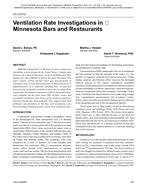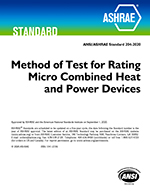Three different types of building thermal performance models are compared: dynamic, steady-state submeter, and steady-state utility bill level. Corresponding to these are three models in common usage in the field : the equivalent thermal parameters approach (ETP), the Buildings Energy-Use Compilation and Analysis method (SUBMET), and the Princeton Scorekeeping Method (PRISM). The models are applied to data from a subset of passive solar houses from the SERI Class B project . The ten houses used are located in the Northeast, Southeast, Midwest, and West, are all served by electric resistance heating, and have crawlspace or slab-ongrade ground coupling . The data include hourly values for indoor and outdoor temperatures, solar radiation, and energy inputs for heating, domestic hot water, and appliances. These data are aggregated according to the needs of the particular model used . The derived parameters compared include an overall building load coefficient, balance temperature, baseload, thermal capacity, time constant, and equivalent south-facing window area. Model results show fairly good agreement among parameter estimates, especially for houses located in colder regions . The errors associated with the parameters are generally larger in warmer climates. Heat loss coefficients determined by an in situ method (called “co-heating” were consistently higher than those from the models studied. The building time constant was a more reasonable indicator of building thermal inertia characteristics than the thermal capacitance . Equivalent south-facing window areas average only about one-third of the actual amount.
Units: SI
Citation: ASHRAE Transactions, 1986, vol. 92, pt. 2A, Portland, OR
Product Details
- Published:
- 1986
- Number of Pages:
- 13
- File Size:
- 1 file , 1.6 MB
- Product Code(s):
- D-PO-86-3011


